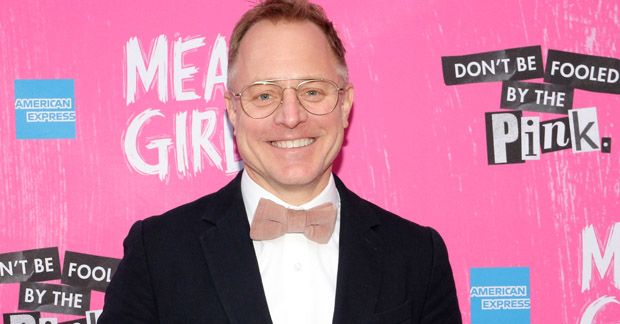Going Back to High School With Mean Girls and The Prom Set Designer Scott Pask
The Tony and Drama Desk winner explains how to build two vastly different creations for a pair of musicals set in similar worlds.

(© David Gordon)
While the two shows are different in terms of plot, size, and scope (Mean Girls is about the viciousness of cliques, while The Prom follows a group of Broadway stars that insert themselves into a small-town controversy), they're also extremely similar. Both productions are directed by Casey Nicholaw (as hands-on a director as you can get), and they're both set in the hallways and courtyards of very contemporary high schools.
As always, Pask prepared for these projects with thorough research. "I looked at a lot of contemporary high school architecture," he says, "particularly at schools in Colorado, where these places are built from the ground up." Being a fan of two modern-day high school-set television dramas, Riverdale and 13 Reasons Why, was also helpful for reference. "I was looking at the hallways, at the lockers, and checking things out in that landscape. Specificity comes when the details support the structure and the narrative."
Of course, each musical presented its own set of challenges. Tina Fey's Mean Girls book, for instance, jumps from location to location with extreme swiftness. "Keeping pace with the speed and ingenuity of Tina's book was the challenge," Pask admits. "We didn't even consider traditional scenery. Casey's innovation from the start was for us to imagine projection, and it proved to work for us really beautifully."
Mean Girls is the largest projection show Pask has ever worked on, and he was determined to go full tilt. "I didn't want it to be sort-of scenery and sort-of projections," he continues. "All of the [traditional] scenic elements provide context for the scene that we're in and transitions for the next scene. Something flies out and there's Regina wheeling down a Xerox machine. They're there for these clever reveals throughout the evening."
For that production, Pask worked in collaboration with video designers Finn Ross and Adam Young, who brought North Shore High School to life on two massive, curved walls made up of 644 square LED tiles. Pask and Nicholaw more or less acted as the art directors. "My office gathered a lot of content. The architecture needed to be really specific; we researched exact typefaces to make sure it didn't feel juvenile. High school is that age where if you miss it by a couple of months…if you're in the spring season, these are the sports that you do.''
By contrast, The Prom has a more traditional design, owing to the more old-school Broadway quality of the material. There are fewer locations in Chad Beguelin and Bob Martin's book, and the scenes tend to last a little longer. "When we plotted through it, we're in New York at a party at the Rainbow Room, and then we're in the high school hallway, and then we're bouncing around. It's pretty tight. We're not going to a million places. It came down to this diagram of New York vs. Midwest, and the blurring of those edges because of the scene structure."
It was Nicholaw who came up with a set idea that ended up working. "Casey suggested periaktoi" —rotating triangular scenic devices that dates back to the ancient Greeks and are still used today — "that flip and transform. The rotations helped transformation and kept the flow even more magical," Pask says, and made it easier to clarify the storytelling, too.
Pask wasn't too worried about his creations being similar. Mean Girls is solely digital, he explains, while The Prom has actual, physical walls that are "cut out of materials that already had shadow lines and texture. We see interiors of gymnasiums and hallways in The Prom, but we didn't have any cafeteria scenes [as they do in Mean Girls], so we avoided that altogether."
Once he started researching, he realized that ultimately, designing two high schools was, in fact, pretty simple. "The only thing they have in common is that they're set in contemporary high schools. For me, it ended there."







